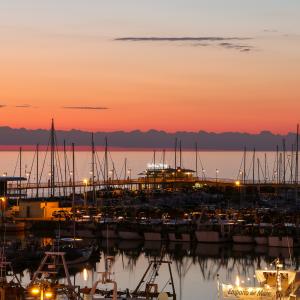From Cattolica to Onferno
Double Adventure: from the deep blue sea to the black heart of the earth!
Stage 1 Cattolica: where the sea is life!
Ready to embark on a breathtaking experience? You start from Cattolica, the “Queen of the Adriatic”! Here, the sea is not just a view; it is an emotion that overwhelms you. Stroll among the fishing boats bobbing up and down at the dock, listen to the symphony of the harbour on stormy days and breathe in the unique atmosphere of the beach, alive in summer and romantic in winter.
- The Queen's Museum: A leap into Cattolica's history, from its origins to the present day. Discover the secrets of the sea and the ancient crafts that have shaped this city.
- Harbour Ecomuseum: A stroll through culture and time amidst vintage photos and fishermen's tales. An experience that will make your heart skip a beat!
- Taste a-go-go: Cattolica is the home of clams and mussels! Don't miss tasting these delicacies in the local restaurants. And if you want to learn more, visit one of the largest mussel farms in Emilia-Romagna!
Stage 2 Onferno: In the kingdom of bats!
From Cattolica we move inland, up the Conca valley floor road and, having passed San Giovanni in Marignano and Morciano di Romagna, continue on to Gemmano with the destination of the Onferno Caves. Legend has it that Dante found the inspiration for his 'Inferno' here!
- UNESCO World Heritage Site: The Onferno Caves are one of mankind’s treasures! A labyrinth of halls and galleries, amongst stalactites and stalagmites, where time seems to stand still.
- Bat Nursery: In summer, the Quarina Hall is transformed into the home of thousands of bats. An incredible spectacle! (Visit only available in winter).
- Caving Adventure: Accompanied by expert guides, explore the depths of the earth. An unforgettable experience of light and shadows, silence and mysteries.
Advice from a real pro:
- Dress in layers, even in summer! It's chilly in the caves, about 12 degrees.
- Comfortable, non-slip shoes are a must!
- Book your visit to the caves in advance, especially if you are travelling during the high season.

